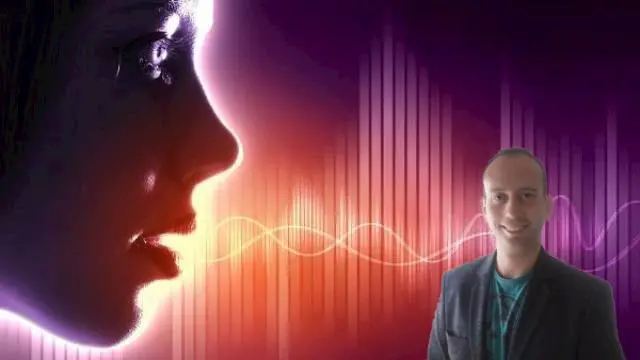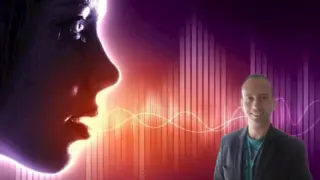- Reed courses certificate of completion - Free

Acoustics: Sounds Right
Explore Acoustics, Sound and Audio
Gilad James
Summary
Overview
All of us speak and hear people blabber every day [Sigh...]. Those of us who are lucky also listen to music every day and some of us even play music. However, very few understand the theory behind music and sound.
Let me blow your mind and take you on a journey into Acoustics - a branch of physics concerned with the properties of sound.
Let us dive deep into the human ear and brush against the Stereocilia. By the end of this course you will know how to measure the exact frequency and amplitude of sound when your spouse yells at you, which we will term 'objectionable information carrying sound'. More specifically:
In section 1: 'Fundamentals of Sound' we will explore The Sine Wave, Sound in Media, Particle Motion, Propagation of Sound, Speed of Sound, Wave 'length' and Frequency, Complex Waves, Harmonics, Phase, Partials, Octaves, Spectrum, Electrical, Mechanical, and Acoustical Analogs.
In section 2: 'Sound Levels and the Decibel' we will explore Ratios versus Differences, Expressing Numbers, Logarithms, Decibels, Reference Levels, Logarithmic and Exponential Forms Compared, Acoustic Power, Using Decibels, Sound-Pressure Level, Loudspeaker SPL, Microphone Specifications, Line Amplifier, General-Purpose Amplifier, Concert Hall, Combining Decibels, Measuring Sound-Pressure Level, and Sine-Wave Measurements.
In section 3: 'Sound in the Free Field' we will explore The Free Field, Sound Divergence, Sound Intensity in the Free Field, Sound Pressure in the Free Field, Examples: Free-Field Sound Divergence, Sound Fields in Enclosed Spaces, and Hemispherical Field and Propagation.
In section 4: 'The Perception of Sound' we will explore Sensitivity of the Ear, Ear Anatomy, The Outer Ear, Directional Cues, The Ear Canal, The Middle Ear, The Inner Ear, Stereocilia, Loudness versus Frequency, Loudness Control, Area of Audibility, Loudness versus Sound-Pressure Level, Loudness and Bandwidth, Loudness of Impulses, Audibility of Loudness Changes, Pitch versus Frequency, Pitch, The Missing Fundamental, Timbre versus Spectrum, Localization of Sound Sources, Binaural Localization, Law of the First Wavefront, The Franssen Effect, The Precedence Effect, Perception of Reflected Sound, The Cocktail-Party Effect, Aural Nonlinearity, Subjective versus Objective, and Occupational and Recreational Deafness.
In section 5: 'Signals, Speech, Music, and Noise' we will explore Sound Spectrograph, Speech, Vocal Tract Molding of Speech, Formation of Voiced Sounds, Formation of Unvoiced Sounds, Frequency Response of Speech, Directionality of Speech, Music, String Instruments, Wind Instruments, Nonharmonic Overtones, Dynamic Range of Speech and Music, Power in Speech and Music, Frequency Range of Speech and Music, Auditory Area of Speech and Music, Noise, Noise Measurements, Random Noise, White and Pink Noise, Signal Distortion, Harmonic Distortion, Resonance, and Audio Filters.
In section 6: 'Reflection' we will explore Specular Reflections, Flutter Echoes, Doubling of Pressure at Reflection, Reflections from Convex Surfaces, Reflections from Concave Surfaces, Reflections from Parabolic Surfaces, Whispering Galleries, Standing Waves,The Corner Reflector, Mean Free Path, Perception of Sound Reflections, The Effect of Single Reflections, Perception of Spaciousness, Images, and Echoes, Effect of Angle of Incidence, Signal Type, and Spectrum on Audibility of Reflection.
Certificates
Reed courses certificate of completion
Digital certificate - Included
Will be downloadable when all lectures have been completed
Curriculum
Course media
Description
All of us speak and hear people blabber every day [Sigh...]. Those of us who are lucky also listen to music every day and some of us even play music. However, very few understand the theory behind music and sound.
Let me blow your mind and take you on a journey into Acoustics - a branch of physics concerned with the properties of sound.
Let us dive deep into the human ear and brush against the Stereocilia. By the end of this course you will know how to measure the exact frequency and amplitude of sound when your spouse yells at you, which we will term 'objectionable information carrying sound'. More specifically:
In section 1: 'Fundamentals of Sound' we will explore The Sine Wave, Sound in Media, Particle Motion, Propagation of Sound, Speed of Sound, Wave 'length' and Frequency, Complex Waves, Harmonics, Phase, Partials, Octaves, Spectrum, Electrical, Mechanical, and Acoustical Analogs.
In section 2: 'Sound Levels and the Decibel' we will explore Ratios versus Differences, Expressing Numbers, Logarithms, Decibels, Reference Levels, Logarithmic and Exponential Forms Compared, Acoustic Power, Using Decibels, Sound-Pressure Level, Loudspeaker SPL, Microphone Specifications, Line Amplifier, General-Purpose Amplifier, Concert Hall, Combining Decibels, Measuring Sound-Pressure Level, and Sine-Wave Measurements.
In section 3: 'Sound in the Free Field' we will explore The Free Field, Sound Divergence, Sound Intensity in the Free Field, Sound Pressure in the Free Field, Examples: Free-Field Sound Divergence, Sound Fields in Enclosed Spaces, and Hemispherical Field and Propagation.
In section 4: 'The Perception of Sound' we will explore Sensitivity of the Ear, Ear Anatomy, The Outer Ear, Directional Cues, The Ear Canal, The Middle Ear, The Inner Ear, Stereocilia, Loudness versus Frequency, Loudness Control, Area of Audibility, Loudness versus Sound-Pressure Level, Loudness and Bandwidth, Loudness of Impulses, Audibility of Loudness Changes, Pitch versus Frequency, Pitch, The Missing Fundamental, Timbre versus Spectrum, Localization of Sound Sources, Binaural Localization, Law of the First Wavefront, The Franssen Effect, The Precedence Effect, Perception of Reflected Sound, The Cocktail-Party Effect, Aural Nonlinearity, Subjective versus Objective, and Occupational and Recreational Deafness.
In section 5: 'Signals, Speech, Music, and Noise' we will explore Sound Spectrograph, Speech, Vocal Tract Molding of Speech, Formation of Voiced Sounds, Formation of Unvoiced Sounds, Frequency Response of Speech, Directionality of Speech, Music, String Instruments, Wind Instruments, Nonharmonic Overtones, Dynamic Range of Speech and Music, Power in Speech and Music, Frequency Range of Speech and Music, Auditory Area of Speech and Music, Noise, Noise Measurements, Random Noise, White and Pink Noise, Signal Distortion, Harmonic Distortion, Resonance, and Audio Filters.
In section 6: 'Reflection' we will explore Specular Reflections, Flutter Echoes, Doubling of Pressure at Reflection, Reflections from Convex Surfaces, Reflections from Concave Surfaces, Reflections from Parabolic Surfaces, Whispering Galleries, Standing Waves,The Corner Reflector, Mean Free Path, Perception of Sound Reflections, The Effect of Single Reflections, Perception of Spaciousness, Images, and Echoes, Effect of Angle of Incidence, Signal Type, and Spectrum on Audibility of Reflection.
Who is this course for?
- Anyone interested in Acoustics
- Anyone interested in Sound Engineering
- Anyone interested in Music
- Anyone interested in Audio Processing
Requirements
-
Come with an open mind.
Questions and answers
Currently there are no Q&As for this course. Be the first to ask a question.
Reviews
Currently there are no reviews for this course. Be the first to leave a review.
Legal information
This course is advertised on reed.co.uk by the Course Provider, whose terms and conditions apply. Purchases are made directly from the Course Provider, and as such, content and materials are supplied by the Course Provider directly. Reed is acting as agent and not reseller in relation to this course. Reed's only responsibility is to facilitate your payment for the course. It is your responsibility to review and agree to the Course Provider's terms and conditions and satisfy yourself as to the suitability of the course you intend to purchase. Reed will not have any responsibility for the content of the course and/or associated materials.


